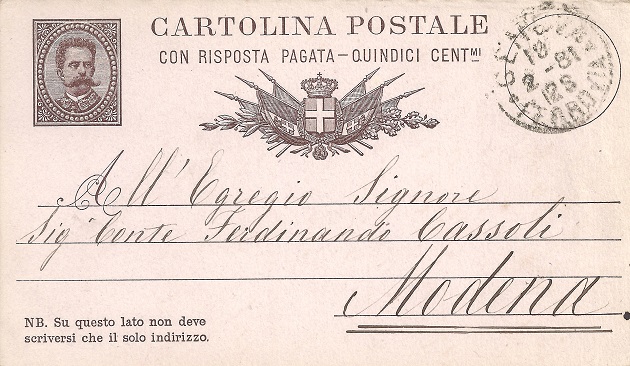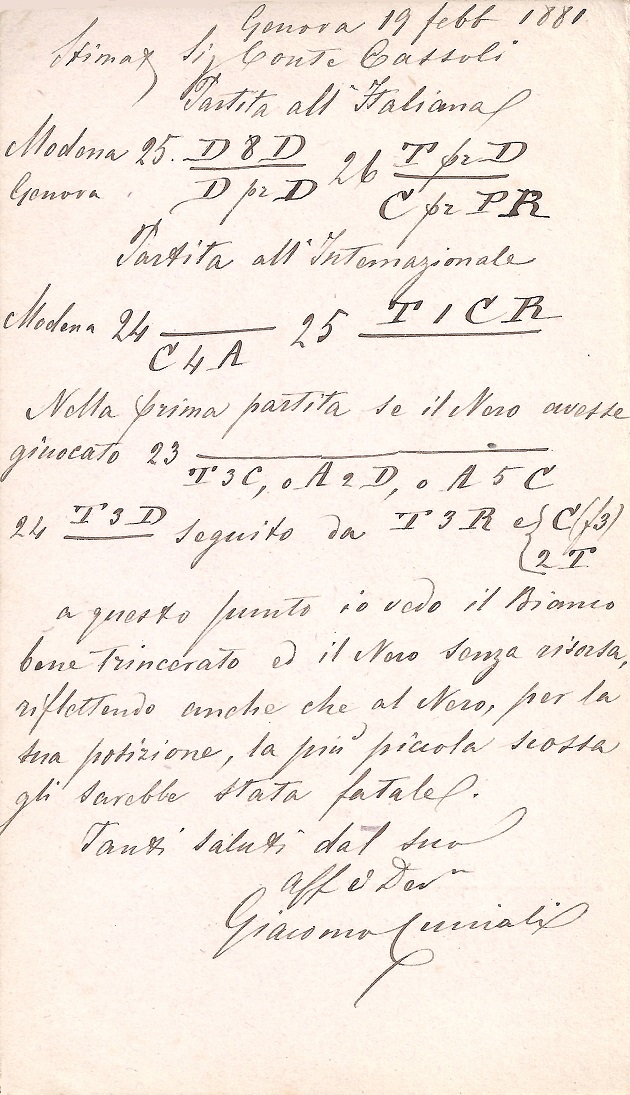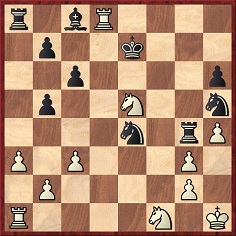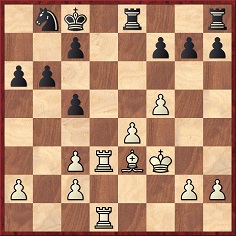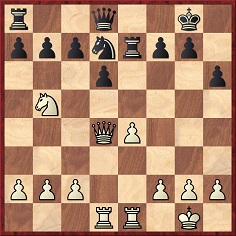Chess Notes
Edward Winter
When contacting us by e-mail, correspondents are asked to include their name and full postal address and, when providing information, to quote exact book and magazine sources. The word ‘chess’ needs to appear in the subject-line or in the message itself.
| First column | << previous | Archives [162] | next >> | Current column |
10685. A publicity ballyhoo
‘Blondes can’t play chess – they can’t concentrate!’ was the opening quote, and a misleading one, in a news item on page 167 of CHESS, 14 January 1939:
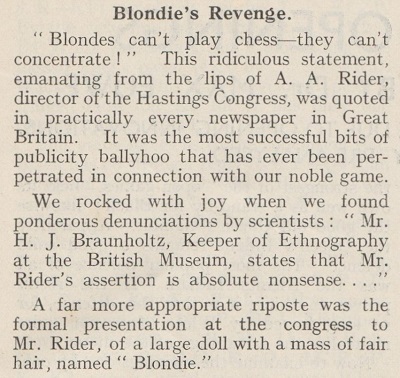
Remarks by A.A. Rider (which concerned fair-haired chessplayers in general) were indeed reported in many newspapers, and a small selection follows:
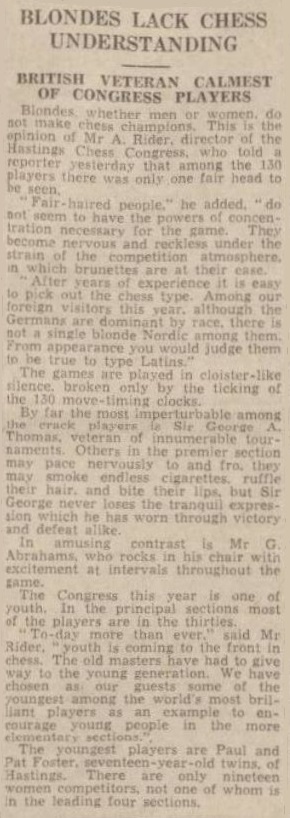
Aberdeen Press and Journal, 30 December 1938, page 3
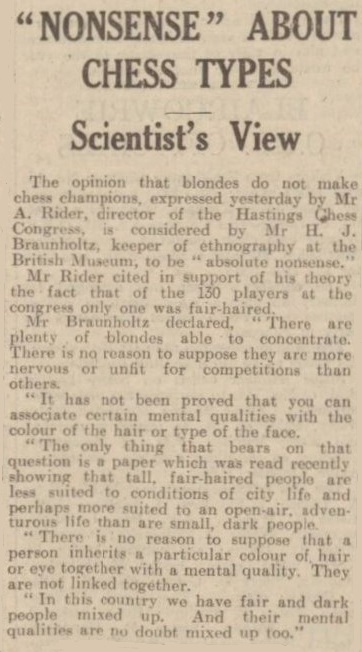
Dundee Evening Telegraph, 30 December 1938, page 6
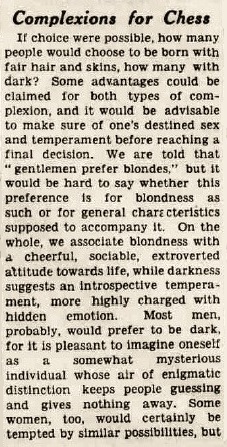

Yorkshire Post and Leeds Intelligencer, 30 December 1938, page 8
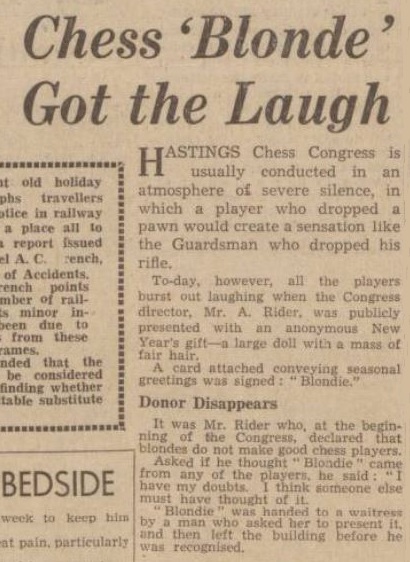
Manchester Evening News, 2 January 1939, page 1
Regarding Arthur Rider, see C.N. 9107.
10686. Fischer and the big red book (C.N.s 8962, 9167, 10677 & 10682)
From Lubomir Kavalek (Reston, VA, USA):
‘Much has been made of Bobby Fischer’s “red book”. Dr Wildhagen published his red books on various players, and I possessed several. The advantage was that each game contained a diagram after every five moves, and you did not have to use a chess board and pieces to “read” it. The Spassky volume came out in 1972 before the match in Reykjavik, but it contained only 353 games played by Spassky, up to 1967. It was not complete.
I did not see the book in Fischer’s room in Reykjavik when we analyzed adjourned games, but I was not looking for it. Nor did I see Bob Wade’s work, although I was quite familiar with it.
I asked Wade to prepare a dossier on my opponents in the 1976 Manila Interzonal. He used index cards handwritten by young English players who also assisted him in publishing the Batsford opening series. He charged 50 US cents per game. The index cards were handy because you could arrange them according to dates, openings, etc. I had been using this system since 1958 while assisting Ludĕk Pachman with his series Theory of Modern Chess (Theorie moderního šachu in Czech).
In 1979 I asked Kevin O’Connell to produce index cards for my opponents in the Riga Interzonal (I limited it to the first 20 moves of each game). After I hurt my knee and could not go there, I re-routed Yasser Seirawan, a second of Jim Tarjan, to fly to Riga via Washington, DC and I handed him 10 kg of games. Those were the professional tools of preparation before computers took over.’
10687. Two correspondence games
Fabrizio Zavatarelli (Milan, Italy) writes:
‘I recently acquired several chess-related postcards addressed to Ferdinando Cassoli Lorenzotti, the strongest player in Modena after the departure of Discart and Bonetti from the city. Some of the cards contain moves in two still-unknown correspondence games between Modena and Genova played in the winter of 1880-81.
One of the games was played under the old Italian rules: no en passant captures; free castling (the king being allowed to go anywhere along his rank, and the rook anywhere between the king and e1/e8, but without being able to give check); restricted promotion (pawns able to promote to captured pieces only, but could also be left unpromoted). Unfortunately, the scores are incomplete and their use of the descriptive notation does not help. I have the following moves (the notes being by Giacomo Cuniali, the leader of the Genovese team, in my translation from the Italian):
Modena-Genova (played under the old Italian rules)
1 ... 2 ... 3 ... 4 ... 5 ... 6 P-Q3 P-KR3 7 P-KR3 B-QN3 8 ... 9 ... 10 ... 11 ... 12 N-KN1 N-KB5 13 ... 14 P-Q4 P-KN4 15 PxP PxP At the moment, it seems to us, a statement about the final outcome of our games should be premature. 16 R-Q1 Q-K2 17 Q-K3 P-KN5 18 P-KR4 P-KN6 Our games are beginning to be interesting and therefore entertaining. [...] I proposed and endorsed the move 18...NxKP until the last minute, but none of my fellow players approved of it, since they considered it less good than 18...P-N6; I eventually accepted the latter, to respect the majority; moreover, 18...P-N6 promises to be a fine continuation as well. [...] If 18...NxP 19 P-KN3 B-B4 at this stage we tried many lines, but the outcome was always unclear because of their countless variations; rather, after many combinations White stood better. Having time, we could study the position more; but we are all busy from morning until night. 19 PxP N-KN5 In one game the attack is ours, in the other it is yours, but so far the situation is hopeless for neither of us. 20 Q-K1 N-R4 21 N-KB3 R-KN1 & K-KR1 [Italian castling] 22 QN-Q2 N(N5)-KB3 23 QN-KB1 R-KN5. Had Black played 23...R-N3 or 23...B-Q2 or 23...B-N5 [then] 24 R-Q3, followed by R-K3 and N(f3)-R2. Here I see White well entrenched, while Black is helpless, all the more so as Black, owing to his positions, would be lost with the slightest shock. [...] If we played 23...B-Q2 24 R-Q3 R-N3 25 R-K3 QR-KN1 26 N[3]-Q2, I said 26 N[3]-R2, thinking of 23...B-KN5. 24 Q-Q2 K-N2 The game, in my opinion, is decidedly drawn because of the move 24 Q-Q2; but we could avoid it only by jeopardizing the game. 25 Q-Q8 QxQ 26 RxQ NxKP 27 BxP KxB If 27 NxKP+ K-K2.
Genova-Modena (played under the standard international rules)
1 ... 2 ... 3 ... 4 ... 5...N-KB3 6 B-Q3 B-K2 7 Castles ... 8 ... 9 ... 10 ... 11...NxB 12 QxN ... 13...P-QR3 14 N-QN3 N-KN5 15 NxB At the moment, it seems to us, a statement about the final outcome of our games should be premature. 15...QxN 16 P-KN3 Q-K4 17 B-B4 Q-R4 18 P-KR4 Our games are beginning to be interesting and therefore entertaining. 18...B-B4 19 Q-Q2 In one game the attack is ours, in the other it is yours, but so far the situation is hopeless for neither of us. In this game we made a very bad move, which was enough for us to be attacked; it was Nd4-b3. 19...N-B3 20 P-KB3 Q-N3 21 R-KB2 KR-K1 22 N-Q4 P-KR4 23 P-QB3 N-Q2 24 K-R2 There is nothing for either party to do, in my opinion, as always happens in the games in which the French and the Sicilian Defences are adopted. 24...N-B4 25 R-KN1 N-K3 26 NxB If 26...QxN 27 B-K3.
It would be interesting to reconstruct the full scores of both games. Knowing their openings would be helpful, but they are stated ambiguously. The Modena-Genova contest is called the “Italian Game”, but that may mean either “the opening is an Italian Game” or “the game is played under the Italian rules”; similarly, the Genova-Modena game is often called “French Game”, which may mean either “the opening is a French Game” or “the game is played under the French rules”. In Italy the international rules were called “French” because they were first codified in a book printed in Paris in 1668 and were subsequently sanctioned by Philidor’s treatise. To complicate matters further, on the postcards the Genova-Modena game is once called “English” and once alluded to as “Sicilian”.
I propose a reconstruction of the “Italian” Modena-Genova game:
1 e4 e5 2 Nf3 Nc6 3 Bc4 Bc5 4 c3 Nf6 5 Castles (Kh1, Rf1) d6 6 d3 h6 7 h3 Bb6 8 Qe2 Ne7 9 Be3 Ng6 10 Bxb6 axb6 11 Bb3 c6 12 Ng1 Nf4 13 Qf3 b5 14 d4 g5 15 dxe5 dxe5 16 Rd1 Qe7 17 Qe3 g4 18 h4 g3 19 fxg3 Ng4 20 Qe1 Nh5 21 Nf3 Castles (Kh8, Rg8) 22 Nbd2 Ngf6 23 Nf1 Rg4 24 Qd2 Kg7 25 Qd8 Qxd8 26 Rxd8 Nxe4 27 Bxf7 Kxf7 (28 Nxe5+ Ke7).
Can any improvements be made to my reconstruction, and is it possible to reconstruct the second game? I should also like to know whether any other postcards relating to the two games have survived.’
10688. Misogyny
An addition to Chess and Women comes from pages 106-107 of CHESS, December 1938:
‘Weymouth, Mass., had an application for membership from a woman. But as none had ever been accepted before, the committee rejected it. We imagine most clubs would vote the other way – after all, every additional member adds his (her) bit to the strength of a club. Any opinions?’
From the ‘Editor’s Mail-Bag’ section on page 191 of the February 1939 issue:
‘Signing himself “Not a Misogynist” (this is the last straw!), a correspondent from St Ives writes:
“In your December issue you say ‘after all, every additional member adds his (her) bit to the strength of a club. Any opinions?’
Yes, I have one at all events, and that is that women do not add strength to a chess club, but the exact reverse. Not only is their chess strength, as a rule, nil, but their characteristics such that chess clubs, even as reading rooms, are always quieter and pleasanter where they are absent.
Yours faithfully,
‘Not a Misogynist’.
I enclose my card.”’
The correspondence column on page 266 of the April 1939 CHESS had the following:
‘Only one reader, J.G.I. of Southampton, stood up for the ladies as members of chess clubs, in answer to “Not a Misogynist’s” damning indictment in No. 41. O, age of chivalry!’
10689. A peculiarity
What is the peculiarity of the text below?
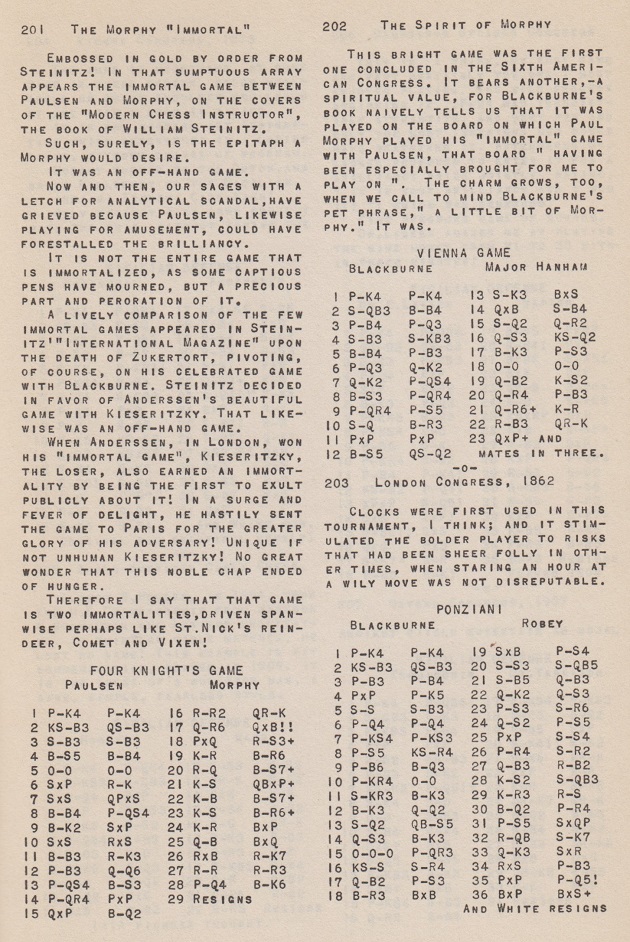
That page, picked at random, is the first of unit three of Amenities and Background of Chess-Play by W.E. Napier (New York, 1935).

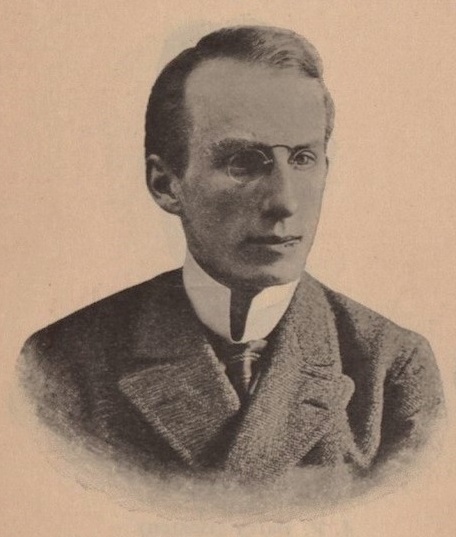
William Ewart Napier (Wiener Schachzeitung, August-September 1904, page 260)
The textual peculiarity was mentioned by K.O. Mott-Smith in a letter on page 353 of the December 1952 Chess Review:
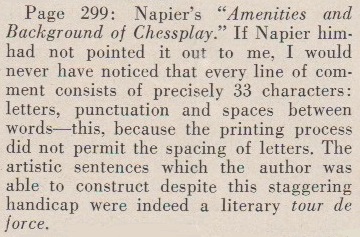
10690. An article by Napier
From pages 179-181 of CHESS, February 1939:

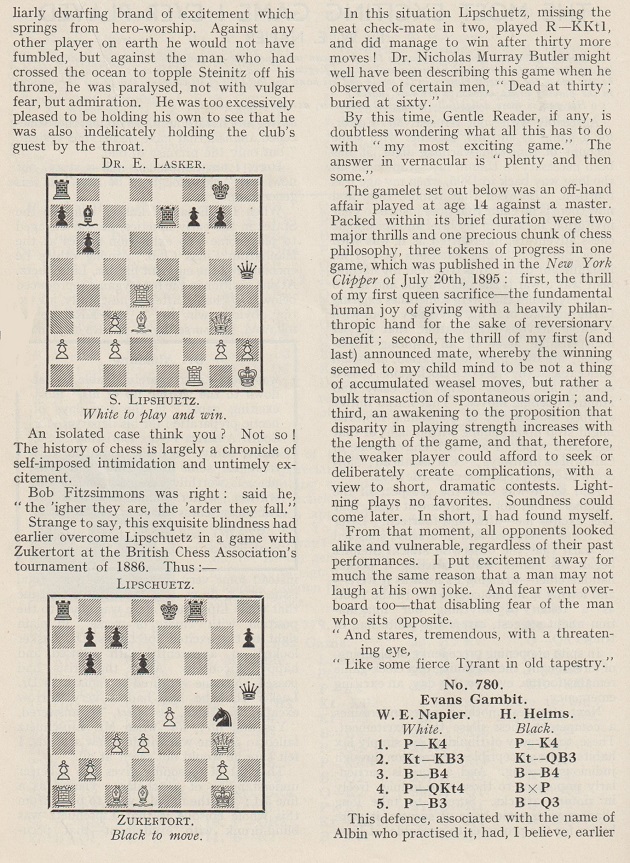
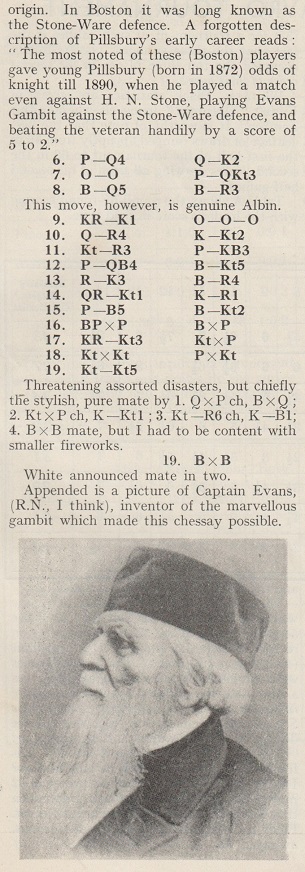
In the first diagram a black pawn is missing from c5. The remark by Napier in the ensuing paragraph is notable:
‘The history of chess is largely a chronicle of self-imposed intimidation and untimely excitement.’
It is also worth highlighting the CHESS Editor’s comment about Napier in the box on page 179: ‘one of the wittiest writers among British or American chess masters of all time.’
Napier’s article and the game against Helms were discussed on pages 13 and 339-341 of Napier The Forgotten Chessmaster by John S. Hilbert (Yorklyn, 1997). Helms wrote tributes to Napier on pages 86-87 of the September-October 1952 American Chess Bulletin and on page 70 of CHESS, Christmas 1952/January 1953.
10691. Genova v Modena (C.N. 10687)
Richard Forster (Zurich) proposes this reconstruction for
the game played under the standard international rules:
1 e4 e6 2 d4 d5 3 Nc3 c5 4 Nf3 cxd4 5 Nxd4 Nf6 6 Bd3 Be7 7 O-O O-O 8 exd5 exd5 9 Be3 Nc6 10 Nce2 Ne5 11 Ng3 Nxd3 12 Qxd3 Bd6 13 Ngf5 a6 14 Nb3 Ng4 15 Nxd6 Qxd6 16 g3 Qe5 17 Bf4 Qh5 18 h4 Bf5 19 Qd2 Nf6 20 f3 Qg6 21 Rf2 Rfe8 22 Nd4 h5 23 c3 Nd7 24 Kh2 Nc5 25 Rg1 Ne6 26 Nxf5 Qxf5 27 Be3.
10692. Primo Levi (1919-87)
Martino Albonetti (Faenza, Italy) points out an article by Primo Levi on the 1981 world championship match in Merano between Karpov and Korchnoi. Entitled ‘Gli scacchisti irritabili’ (‘The Irritable Chess Players’), it was included in L’altrui mestiere (Turin, 1985), an anthology of Levi’s writings which has been published in English as Other People’s Trades (London, 1989).
10693. ‘Humorous problems’
From pages 41-42 of Terms and Themes of Chess Problems by S.S. Blackburne (London, 1907):
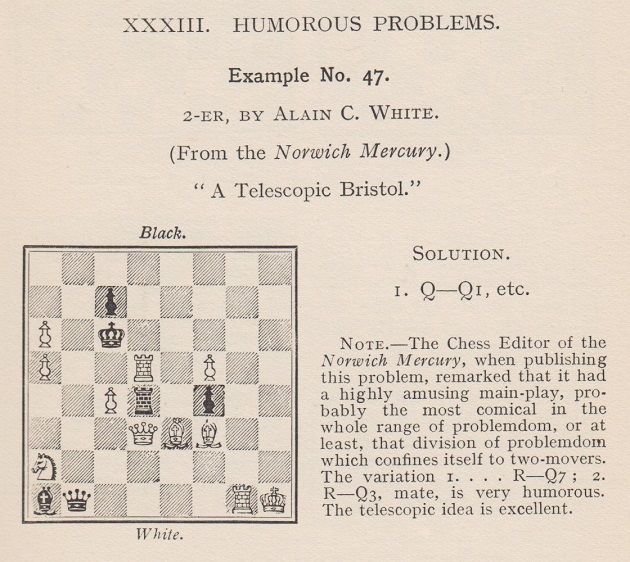
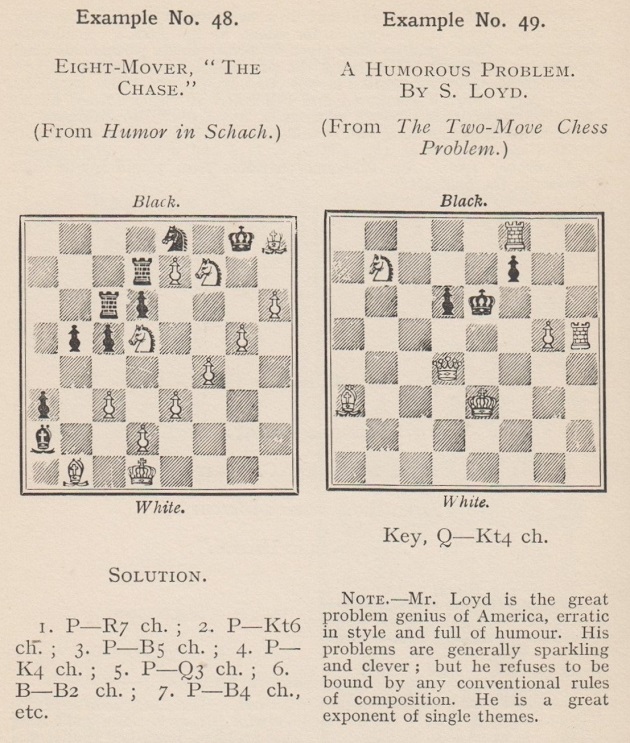
10694. Lasker in Pilsen
Three simultaneous games played by Emanuel Lasker in Plzeň (Pilsen) on 15 [sic] June 1908 have been found by Jan Kalendovský (Brno, Czech Republic) in issues of Plzeňské Besedy from 1908-09 (exact publication dates unavailable):

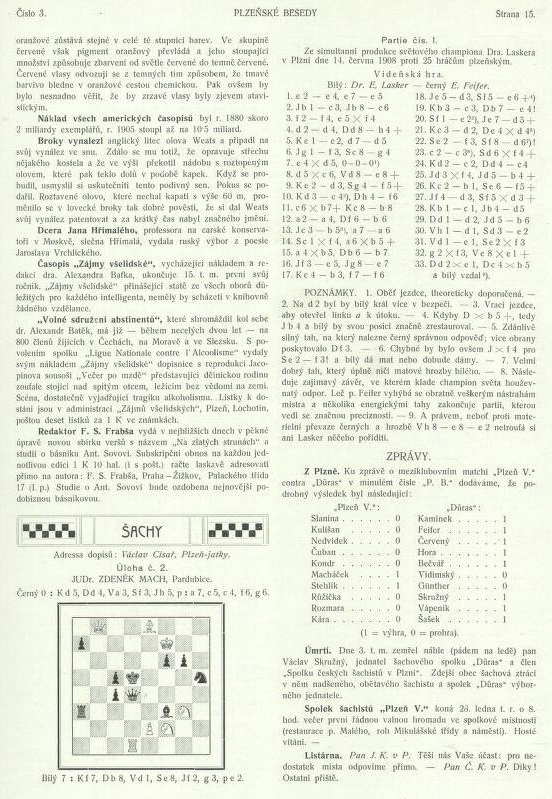
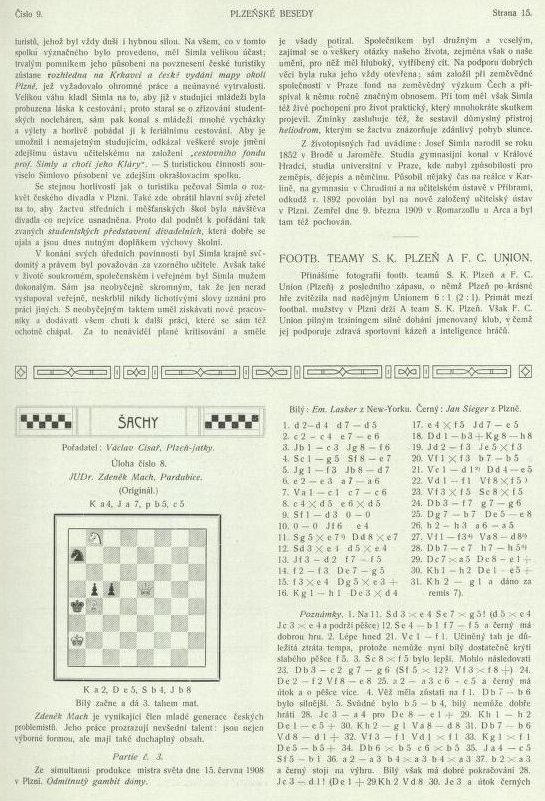
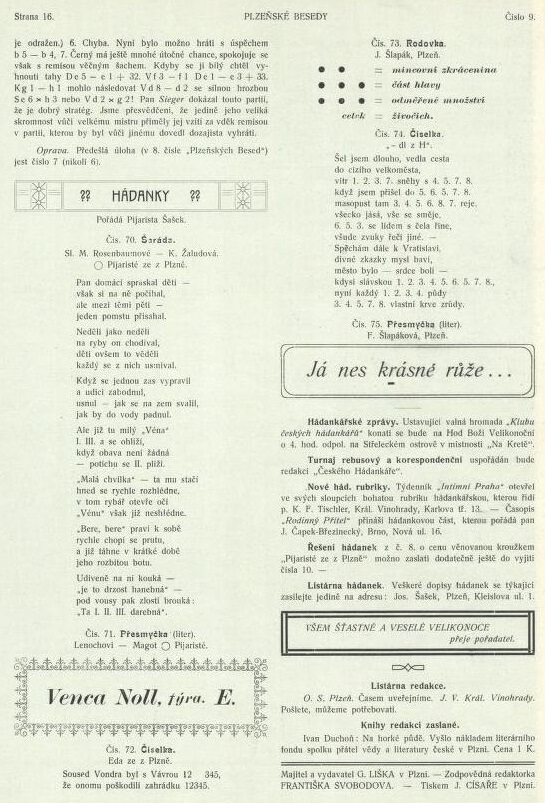
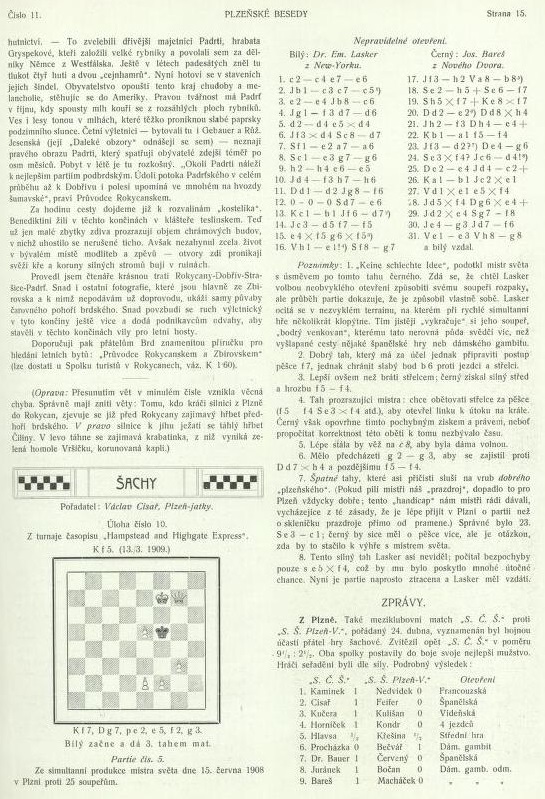
Lasker v E. Feifer: 1 e4 e5 2 Nc3 Nc6 3 f4 exf4 4 d4 Qh4+ 5 Ke2 d5 6 Nf3 Bg4 7 exd5 O-O-O 8 dxc6 Re8+ 9 Kd3 Bf5+ 10 Kc4

10...Qf6 11 cxb7+ Kb8 12 a4 Qb6 13 Nb5 a6 14 Bxf4 axb5+ 15 axb5 Qxb7 16 Ne5 Ne7 17 Kb3 f6 18 Nd3 Be6+ 19 Kc3 Qe4 20 Be2 Nd5+ 21 Kd2 Qxd4 22 Bf3 Bd6 23 c3 Bxf4+ 24 Kc2 Qc4 25 Nxf4 Nb4+ 26 Kb1 Bf5+ 27 Nd3 Bxd3+ 28 Kc1 Nd5 29 Qd2 Nb6 30 Rd1 Be2 31 Re1 Bxf3 32 gxf3 Rxe1+ 33 Qxe1 Qxb5 34 White resigns.
Lasker v Jan Sieger: 1 d4 d5 2 c4 e6 3 Nc3 Nf6 4 Bg5 Be7 5 Nf3 Nbd7 6 e3 a6 7 Rc1 c6 8 cxd5 exd5 9 Bd3 O-O 10 O-O Ne4 11 Bxe7 Qxe7 12 Bxe4 dxe4 13 Nd2 f5 14 f3
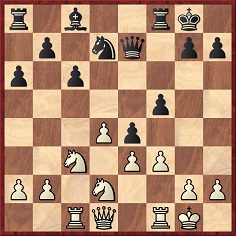
14...Qg5 15 fxe4 Qxe3+ 16 Kh1 Qxd4 17 exf5 Ne5 18 Qb3+ Kh8 19 Nf3 Nxf3 20 Rxf3 b5 21 Rd1 Qe5 22 Rdf1 Rxf5 23 Rxf5 Bxf5 24 Qf7 g6 25 Qb7 Qe8 26 h3 a5 27 Rf3 Rd8 28 Qc7 h5 29 Qxa5 Qe1+ 30 Kh2 Qe5+ 31 Kg1 Drawn.
Lasker v Jos. Bareš: 1 c4 e6 2 Nc3 c5 3 e4 Nc6 4 Nf3 d6 5 d4 cxd4 6 Nxd4 Bd7 7 Be2 a6 8 Be3 g6 9 h4 e5 10 Nf3 h6 11 Qd2 Nf6 12 O-O-O Be6 13 Kb1 Nd7 14 Nd5 f5 15 exf5 gxf5 16 Rhe1 Bg7 17 Nh2 Rb8 18 Bh5+ Bf7 19 Bxf7+ Kxf7 20 Qe2 Qxh4 21 Nf3 Qe4+ 22 Ka1
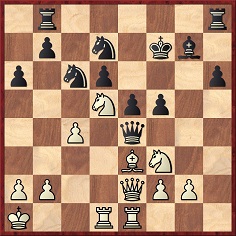
22...f4 23 Nd2 Qg6 24 Bxf4 Nd4 25 Qe4 Nc2+ 26 Kb1 Nxe1 27 Rxe1 exf4 28 Nxf4 Qxe4+ 29 Nxe4 Bf8 30 Ng3 Nf6 31 Re3 Rg8 32 White resigns.
10695. Grand Masters of the Chess World
Chess Grandmasters has not yet mentioned a project announced on page 8 of the (London) Times, 4 January 1939:
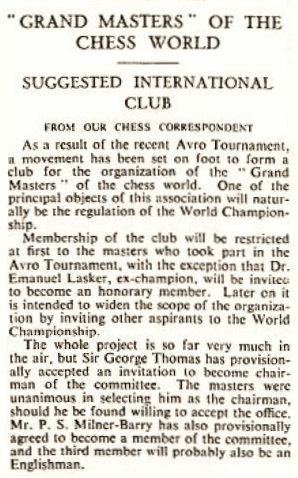
The report was reproduced on page 166 of the February 1939 CHESS.
Page 8 of the 16 January 1939 edition of the Times had a brief follow-up note about the Anglocentric initiative (on which further information is sought):

10696. Problem by Frank Janet (C.N. 10658)
It is still proving impossible to trace the relevant post-17 April 1916 issue(s) of The Chess News.
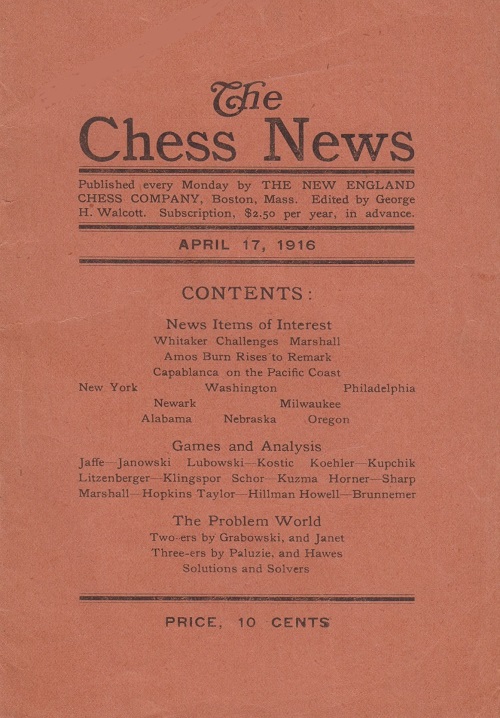
10697. Chess and intellect
‘Careful men do not regard a clever chess player as a man of powerful intellect except in playing chess. The mightiest masters of the game have been great only at chess.’
In 1907 that remark was widely disseminated in newspapers, without attribution. A random example is the Kansas City Kansas Globe of 4 March 1907, page 3:
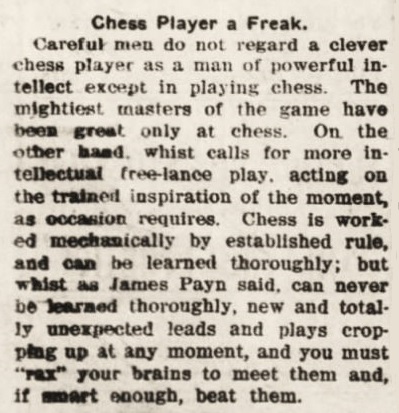
The passage is familiar from page 144 of Lasker’s Chess Magazine, January 1907, where it appeared without the ‘Chess Player a Freak’ heading and with a statement that the text came from ‘the “Tip” column of New York “Press”.’
10698. Primo Levi (C.N. 10698)
Martino Albonetti (Faenza, Italy) adds that in 1984 Primo Levi wrote two poems which refer to chess.
10699. Napier on chess books
The first paragraph of ‘Chess Lore’, an article by W.E. Napier on pages 98-99 of Checkmate, February 1903:
‘The best book on chess? The question blossoms afresh with every new student of the game, and the answer, if candid, is ever the same: “Gather all you can from every good source, and let experience prove the worth or worthlessness of your harvest.” As in other things, mere bookishness is not knowledge, nor on the other hand is a fine disregard of chess literature a key to proficiency; and the beginner drinking in the plausible hallucinations of a Gossip or a Staunton is quite as misguided as he who heeds the warning of a Lasker to give the chess book a wide berth.’
10700. David Joseph
Further to C.N. 4039, Patsy A. D’Eramo (North East, MD, USA) sends this cutting from page 11 of the Manchester Guardian, 8 January 1935:
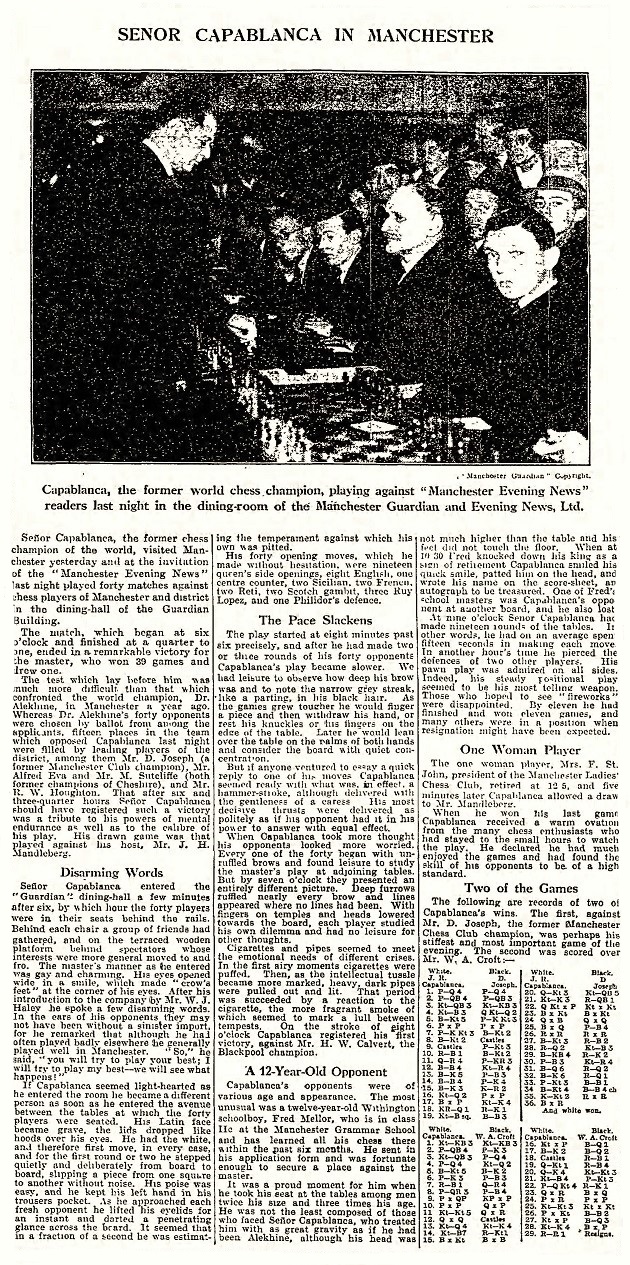
The Capablanca v Croft game is familiar. Below is the score of the Cuban’s victory over Joseph:
1 d4 d5 2 c4 c6 3 Nc3 Nf6 4 Nf3 Nbd7 5 Bg5 g6 6 cxd5 cxd5 7 g3 Bg7 8 Bg2 O-O 9 O-O b6 10 Rc1 Bb7 11 Qa4 h6 12 Bf4 Nh5 13 Be5 f6 14 Bf4 e5 15 Be3 Kh7 16 Nd2 exd4 17 Bxd4 Ne5 18 Rfd1 Re8 19 Nf1 Bc6 20 Qb3 Nc4 21 Ne3 Rc8
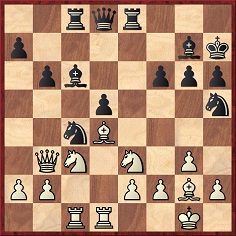
22 Ncxd5 Nxe3 23 Bxe3 Bxd5 24 Qxd5 Qxd5 25 Bxd5 f5 26 Rxc8 Rxc8 27 Bb3 Rc7 28 Rd2 Nf6 29 Bf4 Re7 30 f3 Nh5 31 Bd6 Rd7 32 Be6 Rd8 33 b3 Bf8 34 Bb4 Bc5+ 35 Kg2 Rxd2 36 Bxd2 and wins.
Readers interested in information about David Joseph (1896-1984) will find his entry in Jeremy Gaige’s Chess Personalia a helpful starting-point. Above all, Joseph’s name is associated with an endgame composition published, for instance, on page 104 of the outstanding book Test Tube Chess by A.J. Roycroft (London, 1972):
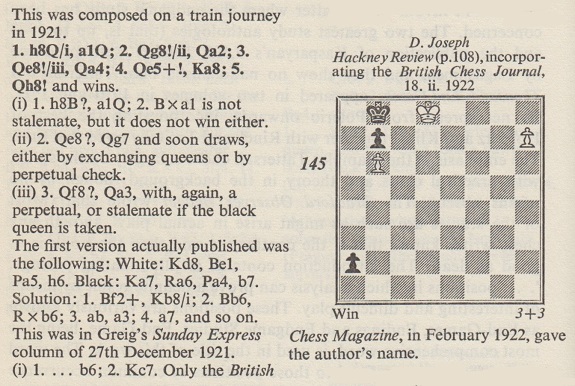
10701. The Philidors
Myron Samsin (Winnipeg, Canada) owns an LP record featuring music composed by André Danican Philidor (1652-1730), the chess master’s father (known as Philidor l’aîné and Philidor le père):
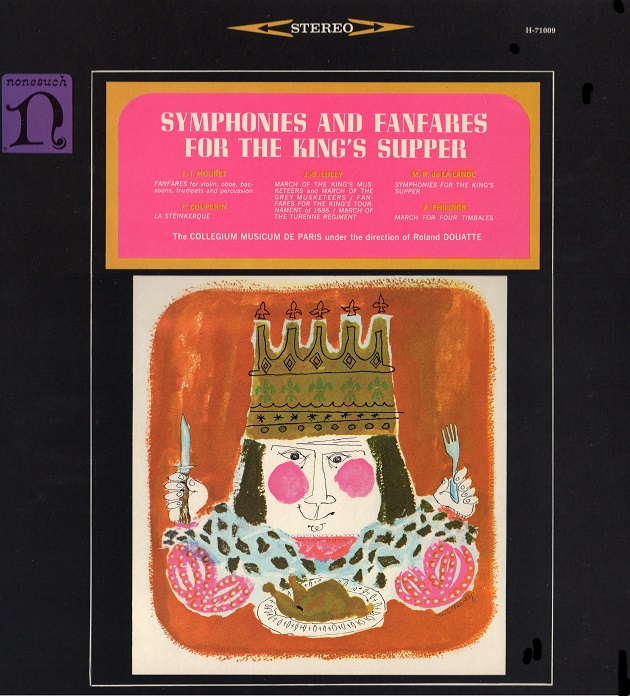
The reverse of the record sleeve has the following note (with an incorrect year of birth for the composer):
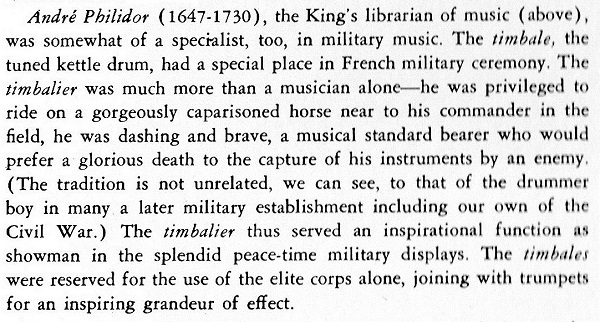
For information about la dynastie des Philidor two particularly detailed books are François André Danican Philidor. La culture échiquéenne en France et en Angleterre au XVIIIe siècle by Sergio Boffa (Olomouc, 2010) and Les Philidor by Nicolas Dupont-Danican Philidor (Bourg-la-Reine, 1997).
10702. Mysterious rook moves
‘The most inspired “mysterious rook move” (to use Nimzowitsch’s terminology) I ever saw’ was C.J.S. Purdy’s comment on 19 Rhe1 in Crowl v Steiner, Sydney, 1945 (see The Australian Nimzowitsch):
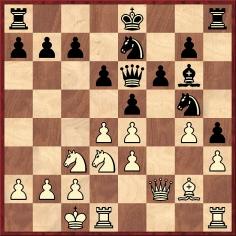
Position after 18...Qe6
A famous specimen (see a page by Tim Krabbé on ‘The 110 most fantastic moves ever played’):
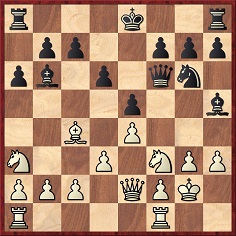
Black played 14...Rg8
Gomes v Neto, Rio de Janeiro, 1942 is the information given too on page 140 of Relax with Chess by Fred Reinfeld (New York, 1948), although the book stated that White resigned after Black’s 18th move:
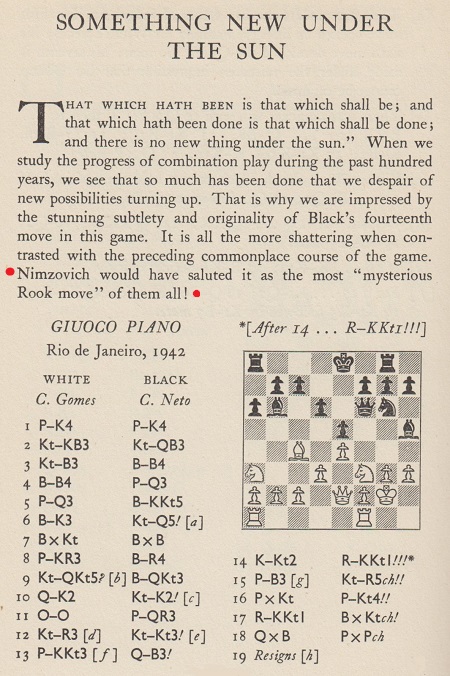
The spelling Netto is also found, as on page 7 of the June 1947 Chess Review (where Gomes’ initial was O., and not C.):
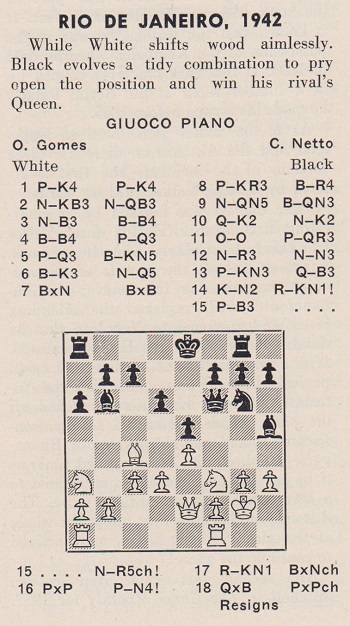
What solid information can be traced about the players and the occasion?
10703. Peacetime and wartime
From page 49 of the Chess Amateur, November 1907:
‘The “German” Notation. Should the happy time come when chessplayers throughout the world agree to adopt one system of notation, that system will be the one which originated in Germany, and is now used in Prussia, Austria, Italy, Argentine Republic and Holland.’
From page 125 of the Chess Amateur, February 1915:
‘We consider the English method perfectly satisfactory and by far the best that has ever been devised. This method may be termed the “Descriptive”. It is in use throughout the British Empire, the United States of America, Belgium and Argentina, and possibly some other countries. The only rival notation is the German method, which for stupidity and clumsiness would be difficult to beat.’
10704. Mysterious rook moves (C.N. 10702)
Eduardo Bauzá Mercére (New York, NY, USA) has found the Brazilian game on pages 253-254 of Jogo de Posição by Erich Eliskases (Rio de Janeiro, 1943), the players being named as Oliveira Gomes and Caetano Neto:
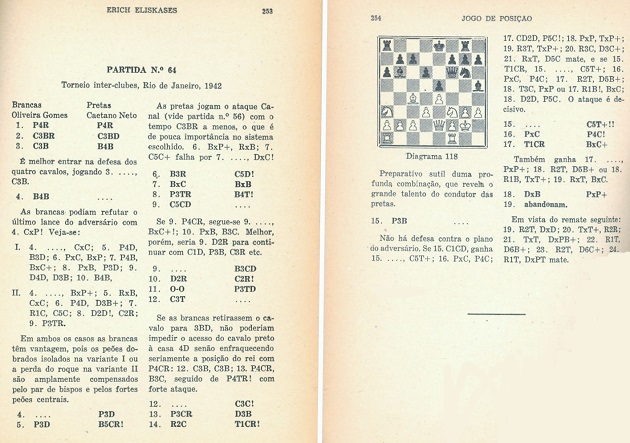
We note, though, the spelling Cayetano Netto in reports on other Brazilian activities in the periodical Enroque!! (Necochea, Argentina); see pages 2, 3 and 7 of the 15 February 1942 issue.
10705. Emanuel Lasker and poker
From Richard Forster (Zurich):
‘Can any reader shed light on Emil Lasker, the author of a 32-page booklet Das Pokerspiel. Leichtfaßliche Anleitung zu seiner gründlichen Erlernung (an easy introduction to poker)? It was brought out in 1907 by the Berlin publishing house of Hugo Steinitz (1852-1909), with a second edition/printing in 1924.
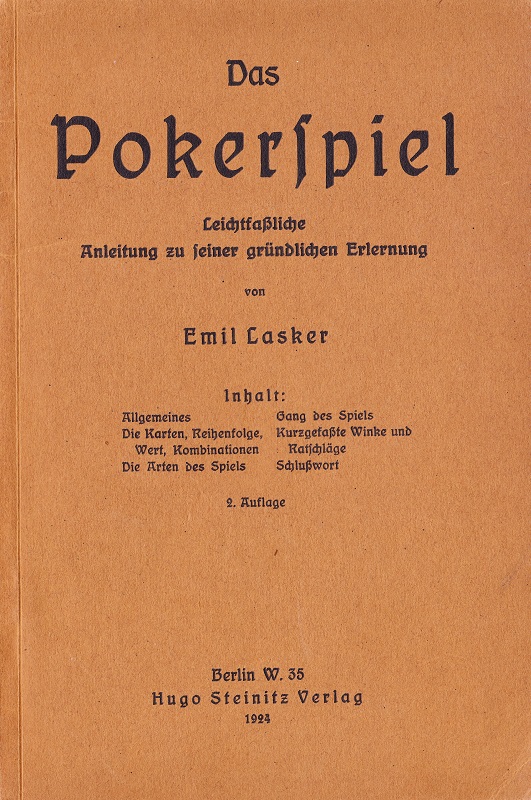
No biographical information on an “Emil Lasker” from that period has been found. Was it a pseudonym?
Emanuel Lasker did study and write about poker in the 1920s. This is the start of a 1927 manuscript on the game (courtesy of Jurgen Stigter, Amsterdam):
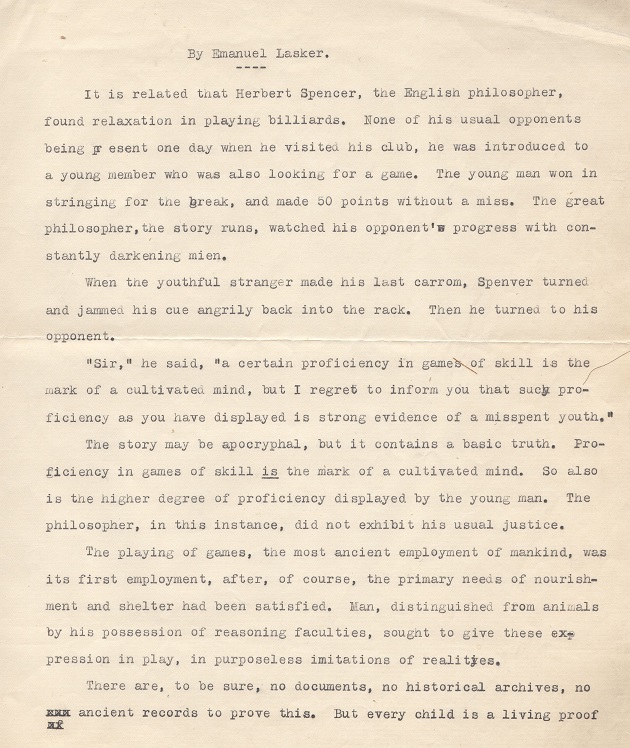
When Das Pokerspiel was first published, in 1907, Emanuel Lasker was in the United States. Although nothing has been found to link him to any person named Emil Lasker, the abbreviation “Em.” sometimes led writers to misname him. For example, on page 19 of the 1891 Schach-Jahrbuch Ludwig Bachmann reported that “Emil Lasker” had won the Hauptturnier in Breslau in 1889 .’
The above illustrations have been provided by our correspondent. An updated and expanded English edition of the German-language monograph on Emanuel Lasker is in preparation as a trilogy, and the first volume is due to be published by Exzelsior Verlag, Berlin in autumn 2018. Edited by Richard Forster, Michael Negele and Raj Tischbierek, that volume will focus on the early part of Lasker’s life (childhood; family; visits to the United Kingdom and the United States; his relations with Tarrasch, culminating in the 1908 world championship match) but will also discuss Lasker’s mathematical work and his chess studies and problems.
10706. A miniature
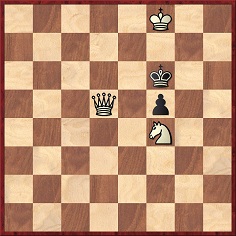
Mate in three
Solvers are invited to note how long they take, and an item will revert to this composition shortly.
10707. Wilhelm Therkatz (C.N. 6723)
From ‘Chernev’s Chess Corner’ on the inside front cover of the October 1952 Chess Review:
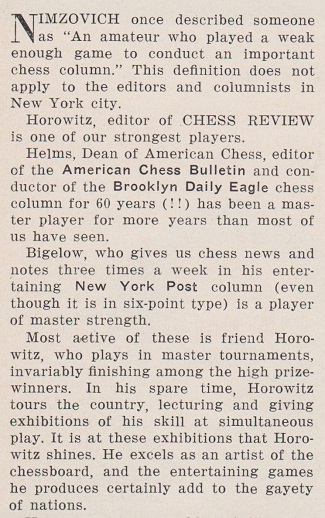
As discussed in C.N. 6723, the columnist referred to by Nimzowitsch was Wilhelm Therkatz. From pages 180-181 of the 1930 edition of Die Praxis meines Systems:
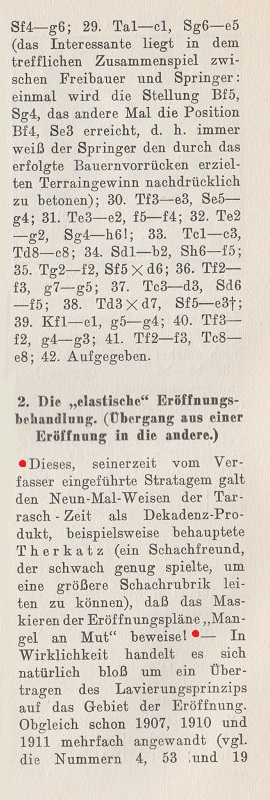
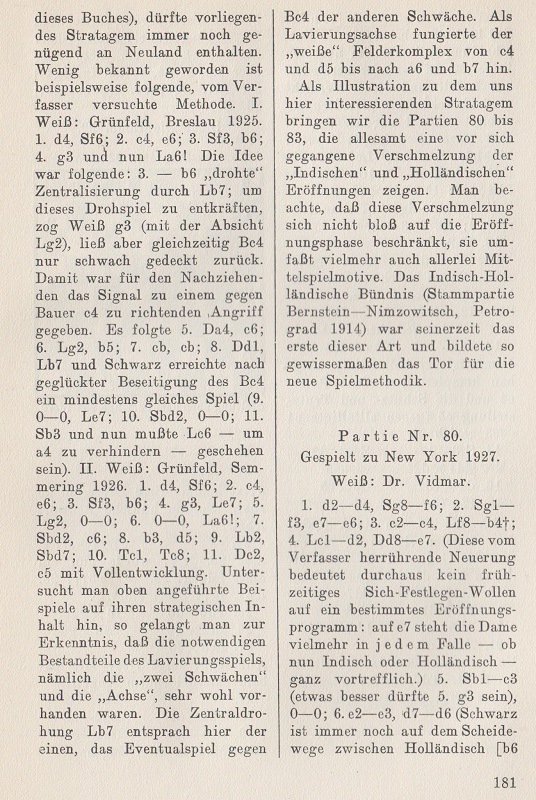
What was the precise wording and context of the remark by Therkatz which Nimzowitsch had in mind?
From page 39 of the February 1925 Deutsche Schachzeitung:

10708. A tall problemist
John Hilbert (Amherst, NY, USA) sends two cuttings on the chess problemist and future Yale professor of eighteenth-century literature, William Kurtz Wimsatt, Jr. (1907-75):
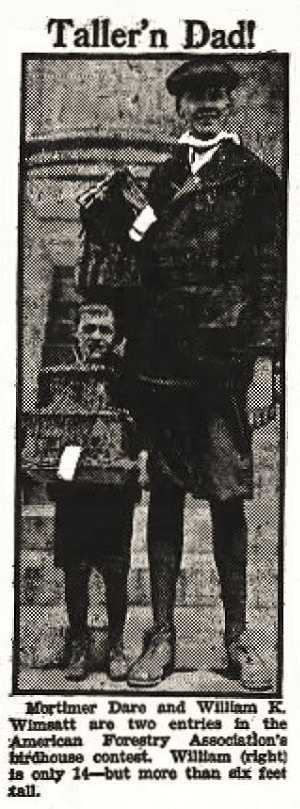
Pittston Gazette, 6 May 1922, page 4
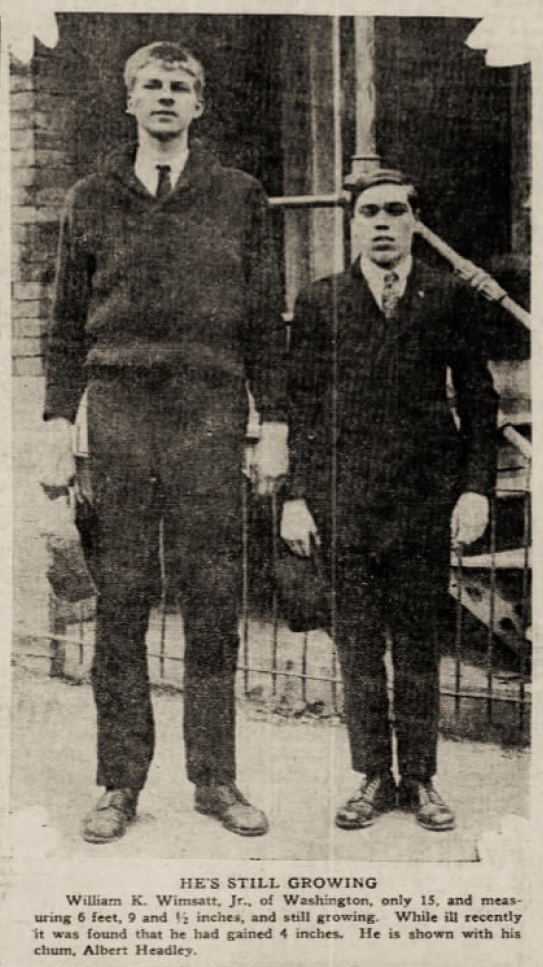
Philadelphia Inquirer, 24 March 1924, page 17.
Additional biographical information.
10709. A musical
Information is sought by Avital Pilpel (Haifa, Israel) about a musical entitled Șah Mat (‘Checkmate’). It was an Israeli production in Romanian, and an advertisement in the National Library of Israel’s collection of posters and other ephemera states that the opening night was on 30 September 1967 at the Ohel Shem Theatre in Tel Aviv.
10710. Gold v White
Wanted: information about a game reportedly won by Dr S. Gold against H.A. White:
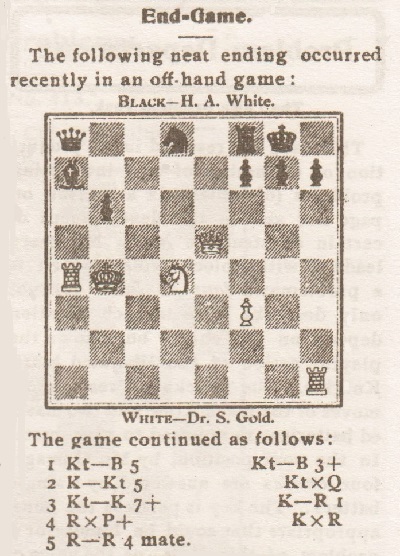
Source: Checkmate, July 1904, page 195.
From page 260 of the November 1911 American Chess Bulletin:

Can a reader supply the Leader column about Samuel Gold?
10711. Problems by Janowsky
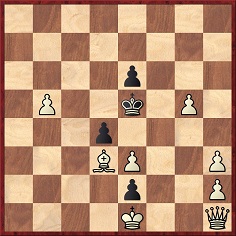
Mate in three
This composition was given in C.N. 1428 (see page 18 of Chess Explorations), our sources being page 74 of the American Chess Bulletin, March 1927 and page 311 of issue 10 of Les Cahiers de l’Echiquier Français. The latter publication stated that the problem had appeared in Le Monde Illustré when Janowsky had a weekly column there, but no date was given.
We add now that it was published, without a source, on page 29 of La Stratégie, 21 January 1903 and that the previous page had another composition by the master:
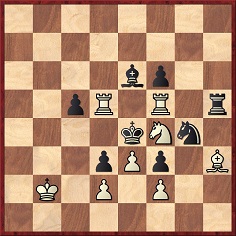
Mate in two.
10712. Claude Bloodgood (C.N.s 9207 & 9222)
With regard to the Claude F. Bloodgood Chess Collection at the Cleveland Public Library, we are grateful to the Library for permission to reproduce four photographs:
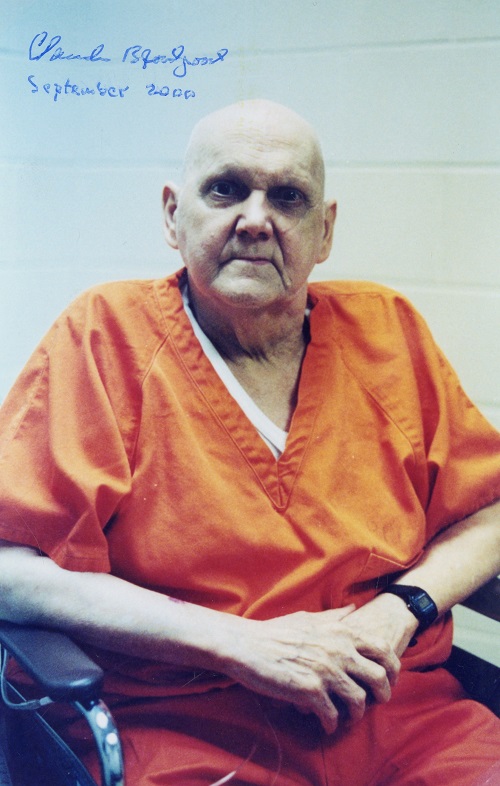
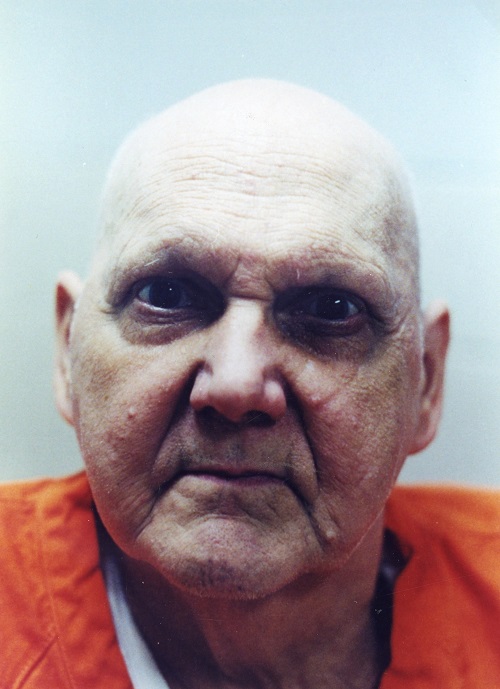
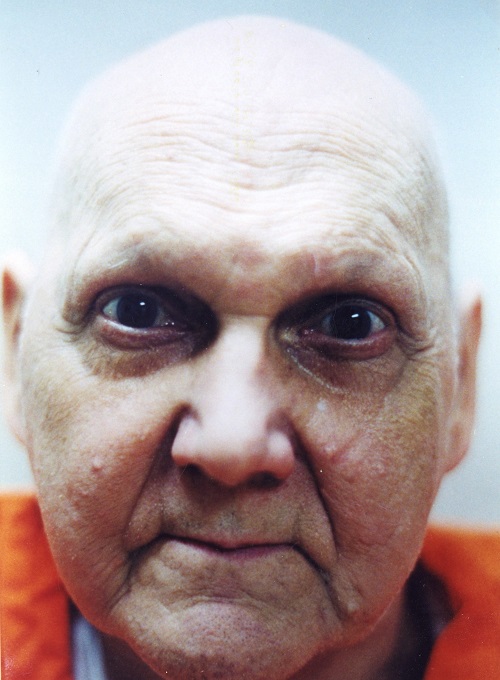
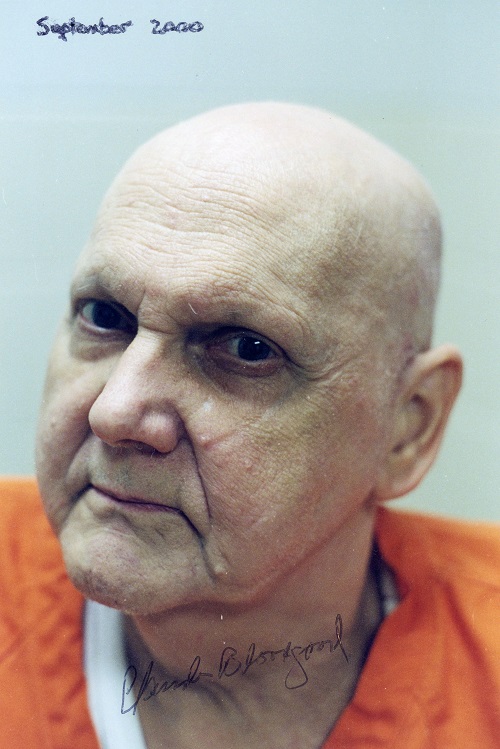
10713. Lasker v Janowsky
Richard Forster (Zurich) draws to our attention a discrepancy pointed out to him by Achim Engelhart:
‘What was the move-order in the third game in the match between Lasker and Janowsky, Paris, 22 October 1909? The encounter has been widely discussed in chess literature for its strategic content but seldom, if ever, for the discrepancy over Janowsky’s choice of moves at the critical stage, after Lasker’s famous 20 f5.
Unlike other such cases, the version in Megabase 2017 corresponds to the one commonly cited: 1 e4 e5 2 Nf3 Nc6 3 Bb5 a6 4 Bxc6 dxc6 5 d4 exd4 6 Qxd4 Bg4 7 Nc3 Qxd4 8 Nxd4 O-O-O 9 Be3 Bb4 10 Nde2 Bxe2 11 Kxe2 Bxc3 12 bxc3 Nf6 13 f3 Nd7 14 Rad1 Ne5 15 Rd4 b6 16 f4 Nd7 17 Rhd1 c5 18 R4d3 Nb8 19 Kf3 Rde8 20 f5
20...f6 21 g4 Re7 22 Bf4 Rhe8 23 Re3 Nc6 24 g5 Na5 25 h4 Nc4 26 Re2 Rf7 27 Rg1 Kd7 28 h5 Nd6 29 h6 fxg5 30 Rxg5 g6 31 fxg6 hxg6 32 Rxg6 Ref8 33 Rg7 Rxg7 34 hxg7 Rg8 35 Rg2 Ne8 36 Be5 Ke6 37 Kf4 Kf7 38 Kf5 Resigns.
However, this version seems to have become “canonical” only after Tarrasch used it in the 1912 edition of Die Moderne Schachpartie (pages 80-82). He, in turn, may have relied on the Deutsches Wochenschach, 7 November 1909, pages 391-392 as his source. Before adoption by Tarrasch, that move-order was a minority version, although it was the sequence given by Lasker himself in the New York Evening Post, 13 November 1909, page 9. Two publications which followed the Deutsches Wochenschach were La Stratégie, November 1909, pages 392-394, and the Wiener Schachzeitung, January-February 1910, pages 26-30.
Most other early publications had a different move order: 20...Re7 21 Bf4 Nc6 22 g4 Rhe8 23 Re3 f6 24 g5, and the rest of the game as above. That sequence was given, for instance, by The Field, 30 October 1909; Deutsche Schachzeitung, December 1909, pages 356-357; the BCM, December 1909, pages 553-554, and many daily newspapers.
Which version is right? The first has the merit of having been given by Lasker himself, but he may have been writing from memory and mixed up the moves (as happened the following year when he annotated the famous last game in the Schlechter match, giving different opening move-orders in different publications). The second has the merit of coming from the Field chess column of Leopold Hoffer, which had stated the previous week, on 23 October 1909, that the match was to be played in the presence of two witnesses and that “The players reserve to themselves the right of disposing of the games, and this right The Field has acquired”.
Can readers provide further information from contemporary sources? What was the move-order given by Lasker when he first annotated the game in the Berliner Zeitung am Mittag, by French publications of the time or by reports from eye witnesses? Which chess journalists were on site during the match?’
10714. Illa and Capablanca
Eduardo Bauzá Mercére (New York, NY, USA) has provided a photograph (reference AR_AGN_DDF/Consulta_INV: 74488) from Argentina’s Archivo General de la Nación, courtesy of the Ministerio del Interior, Obras Públicas y Vivienda. Taken in Buenos Aires in June 1911, it features Rolando Illa and José Raúl Capablanca:
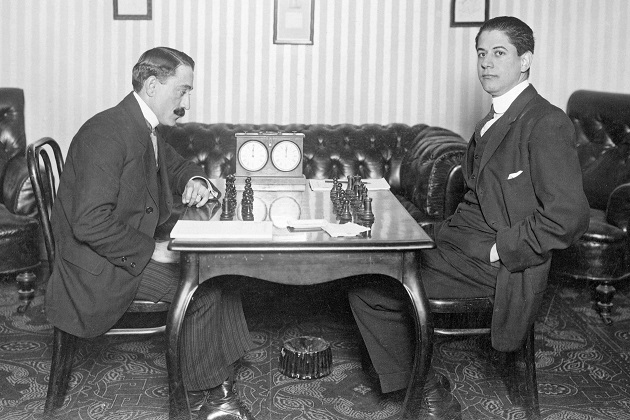
Below we reproduce two familiar games with Capablanca’s annotations on pages 67-70 of the Revista del Club Argentino de Ajedrez, July-September 1911:
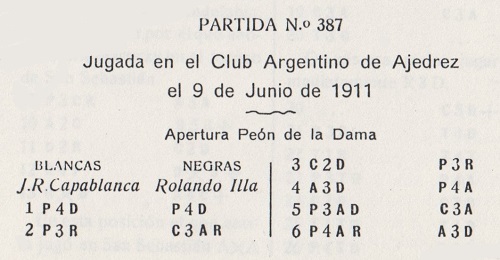
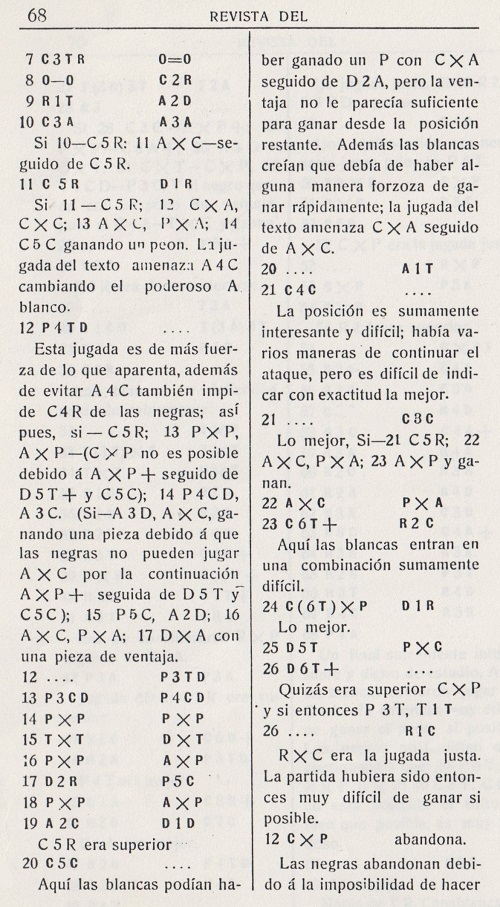
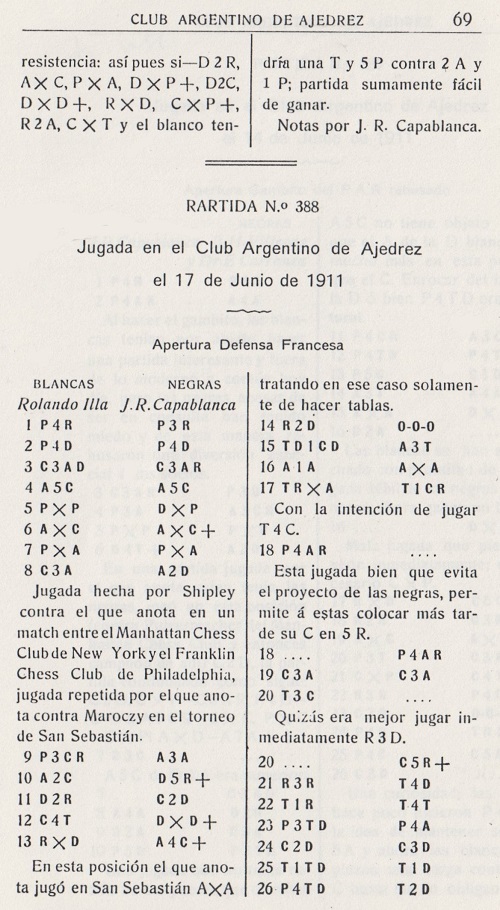
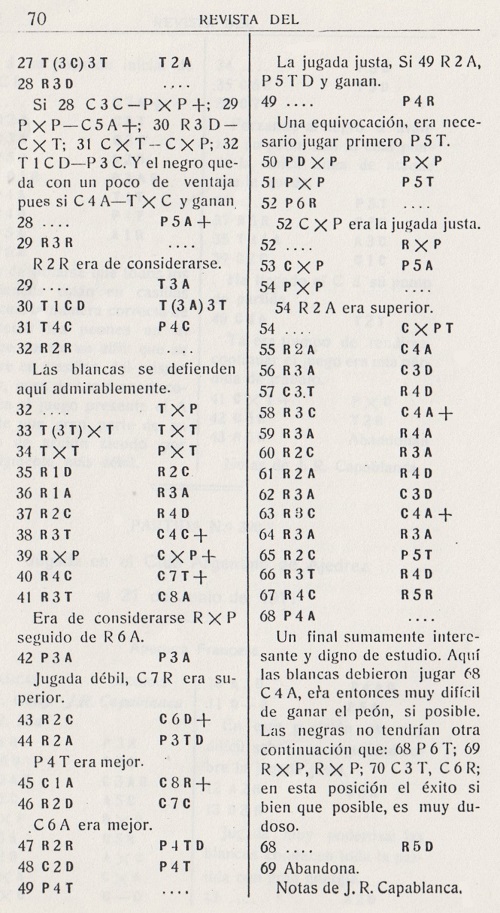
See too C.N. 9553.
10715. Emanuel Lasker’s early years
From Michael Negele (Wuppertal, Germany):
‘According to page 226 of the Chess Monthly, April 1890, and various other sources, Lasker learned the rules of chess when he was 12 from his elder brother Berthold. As the future world champion was born on 24 December 1868, this must have been around 1881. The previous year he had moved from his parents’ home in Berlinchen to live in Berlin with Berthold, who was eight years his senior. Although fascinated by chess almost immediately, Emanuel stated on several occasions that he really learned how to play chess only a couple of years later, when “for over a year” he did not attend school (Ostrauer Zeitung, 5 January 1929; see also the interview in C.N. 9846). Research and examination of school records indicate that this period of intense chess immersion was in 1885; towards the end of that year his parents removed him from the temptations of chess and made him attend school in Landsberg.
During the early Berlin period, Emanuel met Siegbert Tarrasch for the first time according to Jacques Hannak; see page 16 of Emanuel Lasker Biographie eines Schachweltmeisters (Berlin, 1952). At that time, Berthold Lasker and Tarrasch met regularly over the chess board, and since Emanuel followed his brother’s chess activities closely from very early on, it is indeed highly probable that Tarrasch and the younger Lasker met on such an occasion, although their different levels make it unlikely that they played against each other. Tarrasch’s biographer Wolfgang Kamm suggests that those first meetings occurred in 1881/82, given that Tarrasch left Berlin in October 1882 to pursue his studies in Halle an der Saale. See page 91 of Siegbert Tarrasch Leben und Werk (Unterhaching, 2004).
What else is known about these activities in Berlin in the first half of the 1880s?’
This photograph of Tarrasch in 1880, of which a small version appeared in C.N. 3462, is given courtesy of Wolfgang Kamm:
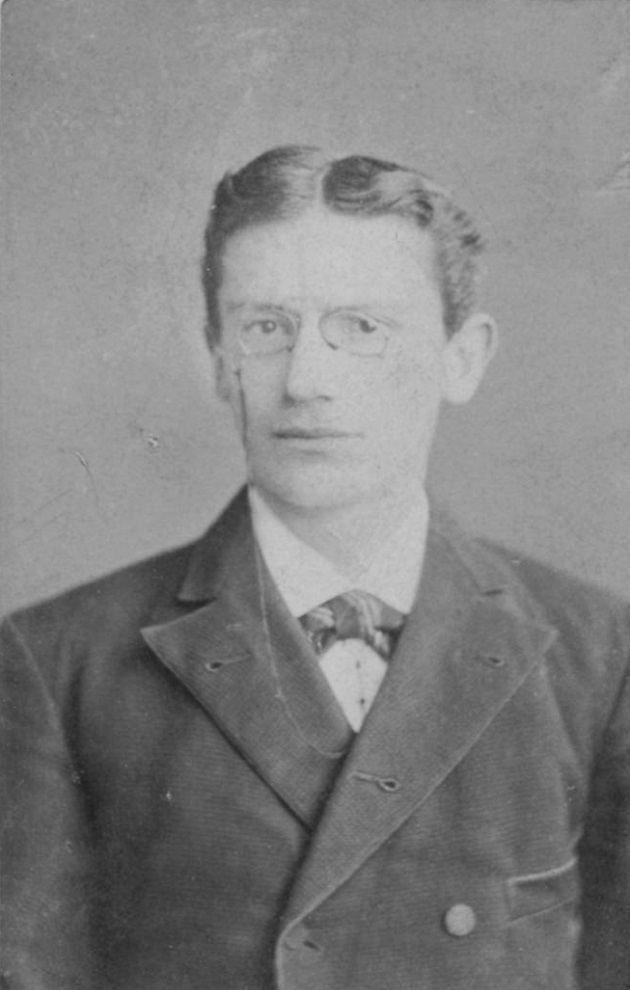
10716. Tarrasch v Lasker
Since the matter raised by Bernd Graefrath (Essen, Germany) in C.N. 2192 (see page 338 of A Chess Omnibus) remains unresolved, his contribution is repeated here:
‘In my research on Emanuel Lasker I have found conflicting data on a move in the fourth game of his match with Tarrasch (Düsseldorf, 24 August 1908). Lasker made his famous rook manoeuvre from e7 via e5 to c5. On move 15 did the white queen go from d4 to c3 or from d4 to c4?
The earliest sources by both Lasker and Tarrasch give 15 Qd4-c3 (and 17 Qc3-b3), as is shown by the Olms volume Die Schachwettkämpfe Lasker-Tarrasch um die Weltmeisterschaft 1908 und 1916 (Zurich, 1981). But later sources give 15 Qd4-c4 and 17 Qc4-b3. These include Réti’s Die neuen Ideen im Schachspiel (Vienna, 1922), Tartakower’s Die hypermoderne Schachpartie (Vienna, 1924-25) and, even, a book by Lasker himself, Brettspiele der Völker (Berlin, 1931), page 79. I think that the older sources are more reliable, but how did the wrong move originate and spread?’
10717. Lasker v Janowsky (C.N. 10713)
Jean-Pierre Rhéaume (Montreal, Canada) notes that Lasker’s Manual of Chess had the move sequence as 20...f6 21 g4 Re7 22 Bf4 Rhe8 23 Re3 Nc6 24 g5:
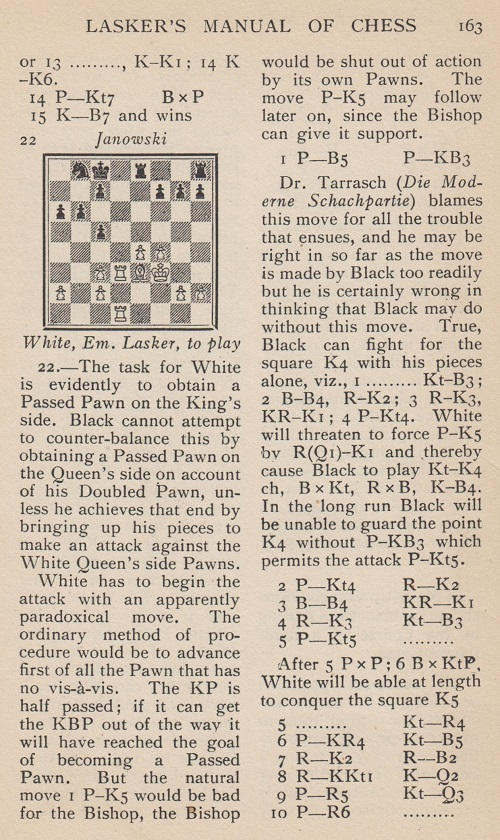
The above is from the London, 1932 volume. In the original English-language edition (New York, 1927) the text was on pages 182-183. In various 1920s German editions (Lehrbuch des Schachspiels), see pages 142-143 or pages 146-147.
10718. Lasker in Buenos Aires
Another photograph has been forwarded by Eduardo Bauzá Mercére (New York, NY, USA) from Argentina’s Archivo General de la Nación, courtesy of the Ministerio del Interior, Obras Públicas y Vivienda (reference AR_AGN_DDF/Consulta_INV: 130945):
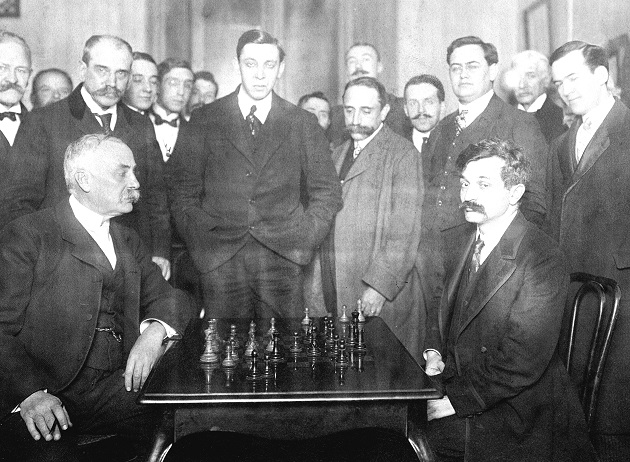
José Pérez Mendoza v Emanuel Lasker, Buenos Aires, June 1910
An inferior version of the picture was given in C.N. 4591, from page 408 of Pérez Mendoza’s book El Ajedrez en la Argentina (Buenos Aires, 1920):
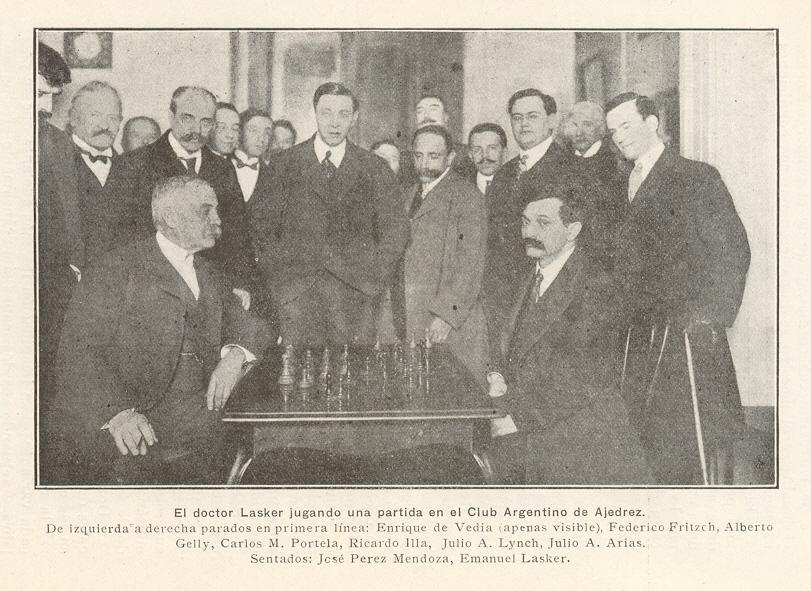
10719. Capablanca in Buenos Aires (C.N.s 10648 & 10714)
This photograph from opposite page 40 of the Revista del Club Argentino de Ajedrez, April-June 1911 has been provided by the Cleveland Public Library:
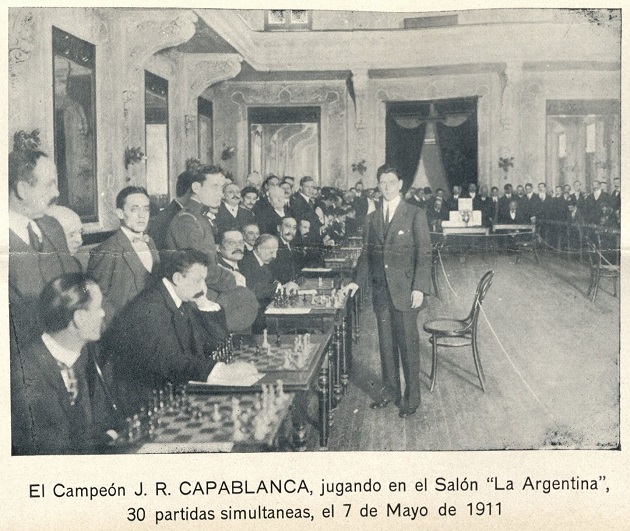
10720. Llandudno, 1895
Gerard Killoran (Ilkley, England) draws attention to the front page of Ally Sloper’s Half Holiday, 21 September 1895:
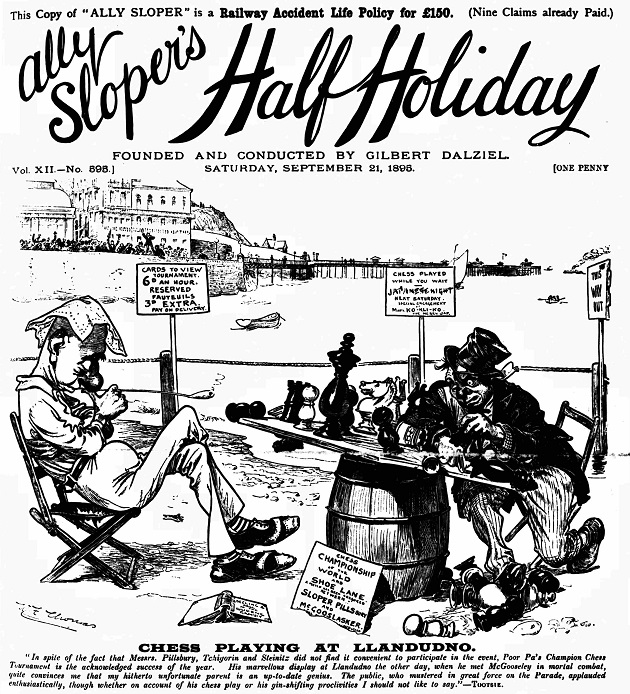
| First column | << previous | Archives [162] | next >> | Current column |
Copyright: Edward Winter. All rights reserved.
